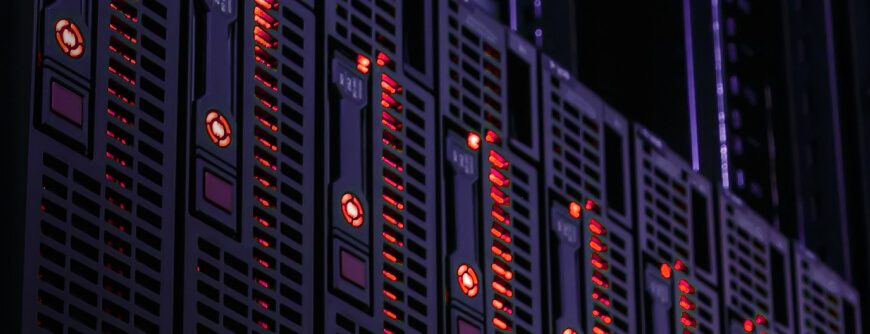在雲端資料中心等高速、高容量環境中,管理員擁有無限的地產,可安裝硬體。刀鋒伺服器透過提供可裝入機箱的精巧實體機器,將主機數以千計伺服器所需的空間降到最低。機箱可以容納多個刀鋒伺服器,然後安裝在機架中。精巧的伺服器共同合作,為企業提供高功率的運算服務。
什麼是刀鋒伺服器?
在資料中心環境中,管理員需要盡可能多地安裝伺服器。「刀鋒」一詞是用來描述非常輕薄的伺服器,適合「硬碟抽取槽」並連接在一起,以執行高功率計算。硬碟抽取槽採用箱式容器(機箱),最多可裝八片刀鋒。機箱可安裝在資料中心的機架中。使用此配置,您可以將數十台伺服器安裝在一個機架中。
因為刀鋒是個別伺服器,所以包含基本硬體元件,組成機器,例如 CPU、記憶體、網路控制器,以及輸入和輸出連接埠。數個刀鋒使用光纖連接在一起,因此資料可以在伺服器與網路之間快速共享。
刀鋒伺服器有哪些元件?
刀鋒伺服器包含的硬體取決於製造商,但大多數機器都附帶共同的基本元件。伺服器的基本功能是在不佔用過多空間的大型個別伺服器下運作。精巧的機器包含 CPU、記憶體和元件,以保持機器冷卻(如散熱片)。
熱插拔硬碟可以安裝在許多刀鋒伺服器中,但您也可以使用網路連接儲存裝置(NAS或儲存區域網路 SAN)託管檔案,供刀鋒伺服器使用。它還包含網路控制器和一個介面,以連接到本地網路。
刀鋒連接到機箱,機箱是將多個刀鋒伺服器連接在一起的外部零件。機箱連接至機架式機箱。機架中的機箱數量取決於機架的大小和每個機箱的大小。通常機架也必須有空間容納連接到刀鋒伺服器的纜線。
刀鋒伺服器如何運作?
在傳統的單一伺服器環境中,企業擁有一台管理運算服務的伺服器。在雲端中,管理員可以利用多台伺服器,而無需在本地託管硬體的成本。刀鋒伺服器是個別伺服器,但數個刀鋒伺服器共同結合運算能力,以執行使用者應用程式等功能。每個刀鋒伺服器都要對應用程式負責,但伺服器可以跨網路分享資料。
刀鋒伺服器勝過機架伺服器的好處之一,就是刀鋒伺服器更精簡,因此您可以將更多伺服器安裝在單一機箱和伺服器機架中。刀鋒伺服器包含最少的元件,可有效運作,但仍會產生高溫,必須從環境中移除。
每個刀鋒都包含一個伺服器,但單一機架中可以包含多個刀鋒。租用刀鋒伺服器的企業通常一次租用數台,以支援關鍵應用程式,但這些伺服器非常模組化。您可以使用熱插拔功能在資料中心之間移動刀鋒伺服器,而無需關閉叢集中的所有刀鋒伺服器。
使用刀鋒伺服器的原因
如果您需要多台伺服器,但沒有儲存它們的房地產,刀鋒伺服器是不錯的選擇。每個刀鋒都是單一伺服器,而這些刀鋒可插入一個小區域。使用雲端服務,您可以租用刀鋒伺服器,而無需安裝在您的本地實體辦公室空間。然而,資料中心管理員仍必須在就地部署中安裝。
刀鋒伺服器是最精巧的運算能力,因此它們通常是企業運算能力的一部分,可支援需要快速速度才能為數千名使用者提供服務的關鍵應用程式。如果您決定移動刀鋒伺服器,它們是熱插拔,不需要管理員關閉整個系統的電源即可移動。刀鋒伺服器的主要優勢在於:
- 模組化且可熱插拔
- 提供高速運算能力
- 支援常見的網路服務,如串流、網路快取和虛擬化
- 為叢集服務提供負載平衡和故障轉移
不使用刀鋒伺服器的原因
如果您擁有一家小型企業,並想在就地部署服務,則可能不必花錢在刀鋒伺服器上,這比標準的獨立伺服器要貴。如果您的組織可以在簡單的就地部署或雲端服務上執行,則可能不需要刀鋒伺服器。
使用雲端服務,您不必擔心刀鋒伺服器涉及的維護工作。溫度與濕度管理在容納任何運算設備時都很重要,包括刀鋒伺服器。如果您想要容納電腦設備,您需要適當的熱度與濕度控制,才能妥善維護伺服器環境。如果沒有刀鋒伺服器,就不應該在本機安裝刀鋒伺服器。
結論
刀鋒伺服器支援虛擬化,因此您甚至可以在雲端環境中使用。雲端供應商提供的伺服器類型取決於您利用的服務,因此您可能已在雲端中使用刀鋒伺服器。如果您特別需要快速、精簡的伺服器,刀鋒伺服器可用於提供快速應用程式,並支援數千名使用者。



